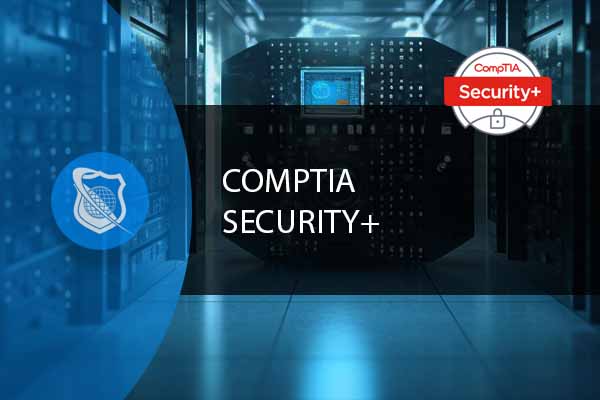What is Cryptography?
Cryptography is the art and science of securing information by transforming it into an unreadable form, known as ciphertext, using various mathematical algorithms. It is an essential aspect of modern communication and has become increasingly important in today’s digital world. Cryptography ensures that sensitive data, such as personal information or financial transactions, remains confidential and protected from unauthorized parties. By using techniques such as encryption and decryption, cryptographic algorithms allow for secure communication over public networks. This article aims to provide an overview of the basics of cryptography, including its types, techniques, and key concepts. From the initial foundations of classical cryptography to the modern approaches of asymmetric and symmetric cryptography, we will explore the various aspects that make cryptography a crucial tool in ensuring the security and integrity of digital documents and information.
Types of Cryptography
Cryptography is the science of secure communication, and it employs different techniques to protect sensitive information from unauthorized parties. There are three main types of cryptography techniques: secret key cryptography, public key cryptography, and hash functions.
Secret key cryptography, also known as symmetric cryptography, uses a single key for both encryption and decryption. The sender and receiver must share this secret key to communicate securely. The encryption algorithm takes the original form of the message and transforms it into an unreadable form using the shared key. The receiver can then decrypt the message using the same key to retrieve the original information.
Public key cryptography, also known as asymmetric cryptography, involves a pair of keys: a public key and a private key. The public key is available to anyone, while the private key is kept secret by the owner. The sender uses the recipient’s public key to encrypt the message, and only the recipient, who possesses the corresponding private key, can decrypt it.
Hash functions are another important aspect of cryptography. They convert data of any size into a fixed-size output, often referred to as a hash value or digest. Hash functions are commonly used for data integrity and authentication. Even a small change in the input data will produce a significantly different hash value.
By understanding the different types of cryptography techniques, individuals and organizations can choose the most suitable approach to safeguard their information and ensure secure communication.
Master Security Princples in our CompTIA Security+ Course
Whether you are looking upskill you current knowledge or learn the basics of managing security in the digital age, our Security Plus course is an excellent resource.
Basics of Cryptography
Cryptography is an essential field in the realm of secure communication and data protection. It involves various techniques and algorithms to safeguard sensitive information from unauthorized access. Understanding the basics of cryptography is crucial for anyone interested in the field or seeking to protect their data. There are three primary types of cryptography techniques: secret key (symmetric) cryptography, public key (asymmetric) cryptography, and hash functions. Secret key cryptography involves using a single shared key for both encryption and decryption, while public key cryptography employs a pair of keys, one public and one private. Hash functions, on the other hand, convert data into fixed-size outputs, commonly used for data integrity and authentication. Each of these techniques plays a vital role in providing secure communication and protection of digital information.
Key Algorithm
In basic cryptography, the key algorithm plays a crucial role in ensuring secure communication and data protection. It involves the generation, encryption, storage, conversion, and distribution of cryptographic keys.
The key algorithm encompasses various processes for key management. Key storage involves securely storing cryptographic keys, typically in a key database or a key management system. Key encryption is used to protect the keys by encrypting them with another key, such as a master key or a key-encrypting key (KEK). These master keys and KEKs are carefully stored and managed to prevent unauthorized access.
Key conversions refer to the process of converting keys between different formats, such as from their original form to an unreadable form for added security or for compatibility with different cryptographic systems.
Key distribution is a critical aspect of cryptography. For symmetric encryption, securely distributing the encryption keys to all authorized parties is essential. However, key exchange poses challenges as it needs to be done securely to prevent interception by unauthorized parties.
Overall, the key algorithm and key management process are integral in cryptography to ensure secure and private communication. Following best practices for key storage, encryption, conversions, and distribution is crucial for maintaining the confidentiality and integrity of sensitive information.
Mathematical Algorithms
Mathematical algorithms play a crucial role in cryptography by providing the foundation for transforming and securing data. These algorithms use complex mathematical procedures to perform cryptographic functions, ensuring the confidentiality, integrity, and authenticity of sensitive information.
These algorithms work by taking plaintext data and applying mathematical operations to transform it into ciphertext. The transformation process involves various mathematical techniques, such as modular arithmetic, prime factorization, discrete logarithms, and elliptic curve arithmetic.
The most commonly used mathematical algorithms in cryptography include:
1. RSA (Rivest-Shamir-Adleman): RSA is an asymmetric encryption algorithm that relies on the difficulty of factoring large prime numbers. It is widely used for secure communication, digital signatures, and key exchange.
2. AES (Advanced Encryption Standard): AES is a symmetric encryption algorithm that uses a block cipher to encrypt and decrypt data. It is highly secure and widely adopted for various encryption applications.
3. Diffie-Hellman Key Exchange: This algorithm enables two parties to establish a shared secret key over an insecure channel, allowing secure communication. It is commonly used in conjunction with symmetric encryption.
4. SHA (Secure Hash Algorithm): SHA is a cryptographic hash function used for generating fixed-size, unique hash values from input data. It ensures data integrity by verifying the integrity of files and digital certificates.
Other mathematical algorithms used in cryptography include DES (Data Encryption Standard), ECC (Elliptic Curve Cryptography), and DSA (Digital Signature Algorithm). These algorithms form the backbone of modern cryptography, transforming data into a secure and unreadable form to protect it from unauthorized access.
Learn To Uncover Vunerabilities In Your Systems
Take a deep dive into Ethical Hacking and learn to combat cybersecurity threats by know how the bad guys get into your systems.
Cryptographic Hash Functions
Cryptography relies on various techniques to ensure secure communication and data integrity. One crucial component in this process is the use of cryptographic hash functions. These functions play a critical role in secure communication by generating a unique hash value for a given input.
A cryptographic hash function takes an input of any length and produces a fixed-size hash value. This hash value acts as a digital fingerprint of the original data. It is important to note that even a small change in the input data will result in a completely different hash value. This property ensures data integrity, as any modification to the original data will produce a different hash value.
Popular cryptographic hash functions include SHA-256 (Secure Hash Algorithm 256-bit) and MD5 (Message Digest Algorithm 5). SHA-256 is widely used in securing passwords, verifying file integrity, and digital signatures. It generates a 256-bit hash value that is considered highly secure. MD5, on the other hand, is known for its speed but has been deemed less secure in recent years due to vulnerability to collision attacks.
In terms of applications, cryptographic hash functions are used to securely store passwords by storing their hash values instead of the actual passwords. They are also employed to verify the integrity of files by comparing the hash value of the downloaded file with the original hash value provided by the sender. Additionally, cryptographic hash functions are used in digital signatures to guarantee the authenticity and integrity of digital documents.
In conclusion, cryptographic hash functions play a crucial role in securing communication and ensuring data integrity. By generating unique hash values for input data, they act as digital fingerprints, enabling various applications such as password security, file integrity verification, and digital signatures.
Block Ciphers
Block ciphers are an essential component of modern cryptography. Unlike stream ciphers which encrypt data one bit at a time, block ciphers encrypt fixed-sized blocks of data with a fixed-sized key. These fixed-sized blocks can be of various lengths, such as 64 or 128 bits.
One of the most widely used block cipher algorithms is the Advanced Encryption Standard (AES). It supports key sizes of 128, 192, and 256 bits, making it highly secure and suitable for a wide range of applications. AES operates on 128-bit blocks and uses a series of mathematical transformations to encrypt and decrypt data.
To enhance the security and versatility of block ciphers, different modes of operation can be used. One such mode is the Electronic Code Book (ECB), where each block of plaintext is encrypted independently. However, ECB has some limitations, including the inability to hide patterns in the data.
To overcome these limitations, other modes of operation such as Cipher Block Chaining (CBC) are commonly used. CBC uses an initialization vector (IV) to encrypt each block of plaintext and XORs the previous ciphertext block with the current plaintext block, creating a chain effect. This ensures that even if two blocks of plaintext are identical, their corresponding ciphertext blocks will be different.
In conclusion, block ciphers are a fundamental tool in modern cryptography, encrypting fixed-sized blocks of data with fixed-sized keys. The AES algorithm is a popular block cipher algorithm, and different modes of operation, such as ECB and CBC, provide enhanced security and versatility.
Stream Ciphers
Stream ciphers are a type of cryptographic algorithm that process the message one bit or byte at a time. Unlike block ciphers, which operate on fixed-size blocks of data, stream ciphers are particularly useful when the length of the plaintext is unknown.
One of the main characteristics of stream ciphers is their speed. Since they encrypt data on a bit-by-bit or byte-by-byte basis, they can typically encrypt and decrypt data faster than block ciphers. This makes them suitable for applications that require real-time or high-speed encryption, such as secure communication over a network or in wireless communication systems.
Stream ciphers are also known for their simplicity and efficiency. They are relatively easy to implement and require less computational resources compared to block ciphers. This makes them suitable for resource-constrained devices like IoT devices or embedded systems.
One well-known example of a stream cipher is RC4 (Rivest Cipher 4). However, it is important to note that RC4 has been found to have vulnerabilities and is no longer considered secure for many applications. As a result, newer stream ciphers like ChaCha20 are being developed to provide stronger security and better resistance against attacks.
In summary, stream ciphers are a type of cryptographic algorithm that process data on a bit-by-bit or byte-by-byte basis. They are characterized by their speed, simplicity, and efficiency, making them suitable for a wide range of applications. While older stream ciphers like RC4 have vulnerabilities, newer ones like ChaCha20 are being developed to address these issues and provide enhanced security.
Symmetric and Asymmetric Encryption
Symmetric and asymmetric encryption are two fundamental approaches in cryptography that provide secure communication and data protection.
Symmetric encryption relies on a shared secret key for both the encryption and decryption of data. This key is known only to the communicating parties involved. The same key is used to encrypt the original message, converting it into an unreadable form, and to decrypt it back into its original form. Since the same key is used for both encryption and decryption, symmetric encryption tends to be faster and more efficient than asymmetric encryption.
On the other hand, asymmetric encryption, also known as public-key encryption, employs a pair of keys – a public key and a private key. The public key is made available to anyone who wants to send an encrypted message, while the private key is kept secret and known only to the recipient. The sender uses the recipient’s public key to encrypt the message, which can only be decrypted using the corresponding private key.
The advantage of symmetric encryption lies in its speed and efficiency. It is well-suited for situations that require high-speed encryption and decryption, such as real-time communication. However, symmetric encryption suffers from the challenge of securely distributing and managing the shared secret key among the communicating parties.
Asymmetric encryption addresses the key distribution problem by eliminating the need for a shared secret key. It offers the advantage of secure communication without requiring a pre-established trust relationship between the sender and recipient. However, asymmetric encryption is slower and computationally more intensive than symmetric encryption.
In summary, symmetric encryption is efficient but requires the secure distribution of a shared secret key, while asymmetric encryption eliminates the need for a shared key but at the cost of slower performance. Both approaches have their own advantages and drawbacks, and their suitability depends on the specific requirements of the application.
Secure Communication and Digital Signatures
Secure communication is a crucial aspect of modern cryptography, ensuring that messages remain confidential, intact, and authentic during transmission. Digital signatures play a key role in achieving this level of security and integrity.
Digital signatures are cryptographic techniques used to verify the authenticity and integrity of digital documents or messages. They provide non-repudiation, meaning that the signer cannot deny having signed the document or message. To ensure non-repudiation, digital signatures employ public-key cryptography.
When a sender wants to sign a document or message, they use their private key to generate a unique digital signature. This signature acts as a cryptographic proof of authenticity and integrity. The digital signature, along with the document or message, is then sent to the recipient.
To verify the digital signature, the recipient uses the sender’s public key. The public key is used to decrypt the digital signature, producing a hash value. The recipient then computes the hash value of the received document or message using the same cryptographic hash function. If the two hash values match, it confirms that the document or message has not been tampered with and that it was indeed signed by the sender.
The use of public keys in the verification process is vital as it allows the recipient to establish the identity of the sender. By using the sender’s public key, the recipient can verify that the document or message came from the intended sender and has not been modified in transit.
In summary, secure communication relies on digital signatures to provide non-repudiation and ensure the authenticity and integrity of digital documents or messages. The use of public keys plays a crucial role in verifying the sender’s identity and providing a high level of security.
Modern Cryptography
Modern Cryptography: Introduction
Modern cryptography is a branch of computer science that focuses on securing information through various cryptographic techniques. In today’s digital age, where communication and transactions take place online, the need for secure and confidential data transfer is paramount. Modern cryptography utilizes mathematical algorithms to protect data from unauthorized access and ensure the integrity and authenticity of digital information. It encompasses a wide range of cryptographic methods, including digital signatures, key cryptography, block ciphers, and asymmetric cryptography. These techniques are used to encrypt data, establish secure communication channels, and authenticate users in a secure and efficient manner. Modern cryptography plays a crucial role in safeguarding sensitive information and enabling secure transactions in various fields, including finance, healthcare, e-commerce, and online communication. It continues to evolve and adapt to new challenges and technological advancements to meet the increasing demands for secure information exchange in the digital world.
Public-Key Cryptography (PKC)
Public-Key Cryptography (PKC) is a type of cryptography technique that revolutionized the field of secure communication. It involves the use of two cryptographic keys, a private key and a public key. The private key is kept secret by an individual or organization, while the public key is shared with others for encryption purposes.
In PKC, each party generates their private and public keys using a mathematical algorithm. The private key remains with the owner and is used for decryption, while the public key is freely distributed to enable encryption by other parties.
One of the main applications of PKC is secure communication. With PKC, a sender can use the recipient’s public key to encrypt the message, ensuring that only the recipient, who possesses the corresponding private key, can decrypt it. This provides a high level of confidentiality during data transmission.
PKC is also used for digital signatures, which ensure the integrity and authenticity of digital documents. The sender can use their private key to digitally sign a document, and anyone in possession of the sender’s public key can verify the signature. This guarantees that the document has not been tampered with and originates from the claimed sender.
In summary, PKC is a powerful cryptographic technique that enables secure communication and digital signatures. The use of private and public keys ensures confidentiality, integrity, and authenticity in the digital world.
Hashing Algorithms
Hashing algorithms are an essential component of modern cryptography, used for various purposes such as data integrity verification and password storage. Two commonly used hashing algorithms are the Message Digest Service (MD) Algorithm and the Secure Hash Algorithm (SHA).
The MD Algorithm family includes MD2, MD4, and MD5, which generate a fixed-size hash value as output. MD algorithms are widely used for applications like checksumming, fingerprinting, and digital signatures. However, due to vulnerabilities discovered over time, they are now being phased out and replaced by more secure alternatives.
The SHA algorithm family, developed by the National Security Agency (NSA), includes SHA-1, SHA-2, and SHA-3. These algorithms produce hash values of varying lengths, providing different levels of security. SHA-1 is widely used but is considered vulnerable to collision attacks, while SHA-2 and SHA-3 are considered more secure.
The primary purpose of hashing is to ensure data integrity. A hash function takes an input (such as a message or file) and produces a fixed-size hash value, which is unique to that input. Even minor changes in the input will result in significant changes to the hash value. By comparing the hash of the received data with the expected hash, one can verify if the data has been tampered with during transmission.
Hashing is also commonly used for password storage. Instead of storing passwords in plain text, which is highly risky, the passwords are hashed and stored in the database. When a user enters their password during login, it is hashed and compared with the stored hash. This way, even if the database is compromised, the actual passwords remain secure.
One key characteristic of hashing algorithms is one-way encryption. It is computationally infeasible to reverse the hash value to obtain the original input. This ensures that the integrity of the data or the passwords remains intact.
Another important characteristic is the prevention of collisions. A collision occurs when two different inputs produce the same hash value. Hashing algorithms aim to minimize the likelihood of collisions, as they can compromise the integrity and security of the data.
In conclusion, hashing algorithms such as the MD Algorithm and SHA are crucial in cryptography for ensuring data integrity and password storage. They provide the security necessary to protect data during transmission and storage. By using one-way encryption and preventing collisions, hashing algorithms serve as a fundamental building block in the field of cryptography.
Digital Certificates
Digital certificates play a crucial role in verifying the authenticity of digital signatures. They are used to associate a public key with an individual or organization, providing trust and encryption in secure communication.
A digital certificate is a type of electronic credential that serves as a digital passport, verifying the identity of the certificate holder. It contains key information, such as the person or organization’s name, the public key associated with the certificate, the digital signature of the certificate authority, and an expiration date.
When someone wants to verify the authenticity of a digital signature, they can examine the digital certificate associated with it. The certificate includes the public key of the signer, which can be used to verify that the signature was indeed generated by the corresponding private key. By confirming the certificate’s validity and checking the digital signature, one can establish trust in the authenticity and integrity of the digital signature.
Digital certificates are issued by trusted third-party entities known as certificate authorities (CAs). These CAs use their own private key to digitally sign the certificates, ensuring their authenticity. This system of certification helps to establish a chain of trust, where the trustworthiness of one certificate relies on the trust placed in the certificate authority that issued it.
In summary, digital certificates play a vital role in securing and verifying digital communications by associating a public key with an individual or organization. They provide assurance of authenticity and enable encryption in secure communication channels.
Key Management
Key management is a crucial aspect of cryptography that involves the secure handling and storage of cryptographic keys. Cryptographic keys are used to encrypt and decrypt data, ensuring the confidentiality and integrity of sensitive information.
When it comes to key management, several important processes need to be considered. Key storage and retrieval involve storing cryptographic keys in a secure manner, ensuring that they are protected from unauthorized access. This can be achieved through the use of secure hardware modules or by encrypting the keys and storing them in a secure database.
Key encryption and conversions are also important aspects of key management. Master keys are used to encrypt other keys, such as key-encrypting keys (KEKs) or data keys. This provides an additional layer of security, as the encrypted keys can only be decrypted with the corresponding master key.
Key distribution is another crucial process in key management. It involves securely transmitting the cryptographic keys to authorized parties who need to access encrypted data. This can be achieved through secure channels or by using key distribution protocols.
In some cases, key escrow may be implemented as part of key management. Key escrow involves storing a copy of the cryptographic keys with a trusted third party. This allows for key recovery in the event of key loss or compromise, ensuring the continuity and security of data.
Overall, effective key management is essential for maintaining the integrity and security of cryptographic systems. By securely handling and storing cryptographic keys, organizations can protect sensitive information and ensure the confidentiality of their data.
FAQ Section : Understanding Basic Cryptography for Secure Data Management
What is basic cryptography, and why is it essential for securing data in the digital age?
Basic cryptography refers to the foundational principles and techniques used to encrypt and decrypt information, ensuring its confidentiality, integrity, and authenticity. In the digital age, with increasing threats to data security from hackers and cybercriminals, cryptography plays a crucial role in protecting sensitive information from unauthorized access, making it essential for personal privacy, secure communication, and safeguarding business data.
How does encryption work in basic cryptography to protect my data?
Encryption in basic cryptography involves converting plain text into a scrambled format known as ciphertext, using algorithms and cryptographic keys. Only those with the corresponding decryption key can revert this ciphertext back to the original, readable format. This process ensures that even if data is intercepted or accessed by unauthorized parties, it remains unreadable and secure.
What are the most common types of cryptographic algorithms used for data security?
the same key is used for both encryption and decryption) and asymmetric-key algorithms (which use a pair of keys, one for encryption and one for decryption). Examples include AES (Advanced Encryption Standard) for symmetric encryption and RSA (Rivest-Shamir-Adleman) for asymmetric encryption. Both types are foundational to securing digital communications and data.
How can I implement basic cryptography for my personal data or business?
Implementing basic cryptography for personal data or business involves several steps, including identifying sensitive data that needs protection, choosing the appropriate cryptographic algorithms and tools, and managing cryptographic keys securely. For personal data, using encrypted messaging apps and secure password managers can be a good start. Businesses may require more complex solutions, including implementing SSL/TLS for website security and employing encrypted databases.
Are there any challenges or limitations to using basic cryptography for data security?
While basic cryptography is a powerful tool for data security, it does have limitations. These include the potential for cryptographic keys to be lost or stolen, the need for strong and unique passwords to prevent brute force attacks, and the possibility of encryption algorithms being broken with advances in computing power, such as quantum computing. Regularly updating cryptographic practices and staying informed about the latest security threats are essential measures to address these challenges.












